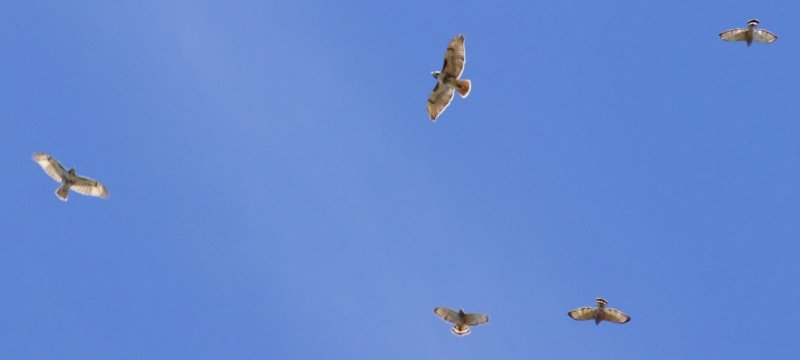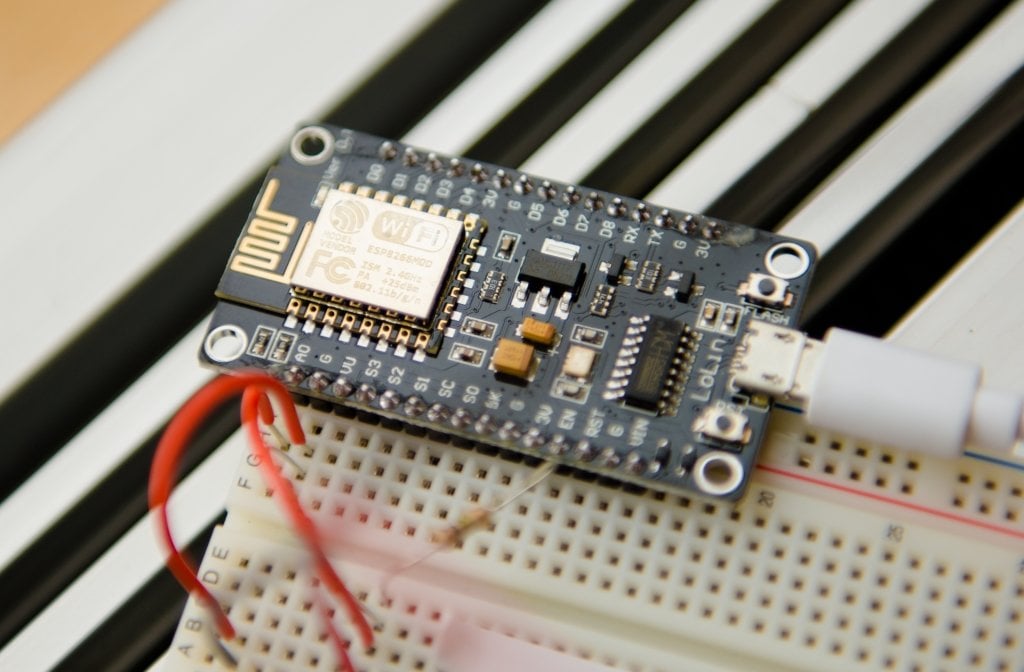COVID-19 altered the classroom habitat. In his guest blog, David Flaspohler shares what changed in his ornithology course — and offers space for finding solace and innovation.
"From now on it can be said that plague was the concern of all of us. Thus, for example, a feeling normally as individual as the ache of separation from those one loves suddenly became a feeling in which all shared alike and — together with fear — the greatest affliction of the long period of exile that lay ahead."
As a professor at Michigan Technological University, the most immediate impact of the virus was on my work. Like millions of others, by early March 2020, office and classroom routines were upended, communication became remote and irregular, and the periodic casual experience of the classroom, the hallway conversations and the easy chat with students in the atrium disappeared. In their place, we got Zoom and Google Meet, virtual breakout rooms and chat.
Like many others, I was amazed how rapidly students and instructors adapted to these changes using technology that was brand-new to us. Sure, there were hiccups and frustrations; this fall, my hybrid class lasted just two weeks before I went fully synchronous online and was relieved not to face another two hours of breathing into my own moist mask. It came as a complete surprise to me that I found the limits of communicating with masked students a greater barrier than speaking and listening to them through my computer screen. I had been certain that I could deliver a better learning experience by sharing the classroom with my students. That might be the case for other instructors, but it did not work for me.
"You know what the fellow said — in Italy, for thirty years under the Borgias, they had warfare, terror, murder and bloodshed, but they produced Michelangelo, Leonardo da Vinci and the Renaissance. In Switzerland, they had brotherly love, they had five hundred years of democracy and peace — and what did that produce? The cuckoo clock."
About the Researcher
On Being a Professor
Many of us became professors in part to share our passion for our discipline with young people — to see the spark of excitement in a student’s mind when we describe how birds evolved from dinosaurs or the physics of bird flight. I will continue to miss that until it returns, but this experience has also forced me to develop new methods of teaching within the constraints (and the unexpected freedoms) of the new digital environment. Creativity can be sparked by change that pushes us to find new ways to do the things that had become routine.
I won’t call such disruptions of the routine a silver lining of the coronavirus because it has brought too much pain and hardship. I share this story of a part of my own experience in teaching under COVID-19 restrictions in the certainty that many thousands of teachers have also found ways to survive, cope and, once in a while, discover something new and wonderful.
A month into the advent of online teaching in April 2020, I had pretty much decided to cancel FW3620-Field Ornithology, a one-credit field class that I have taught for 20 years. The class involves driving two vans from Houghton to Seney National Wildlife Refuge and then Whitefish Point Bird Observatory, camping and birdwatching along the way day and night for three days.
When I mentioned this to my wife, she said: “Couldn’t you just rework the class to teach it online?” My first thought was: “No…impossible.”
That course is immersive; we are outside or packed into MTU vans for 48 hours straight, in rain, sun, snow, watching birds and hiking through forests, wetlands and beaches. Each year, just after dusk on the first night, we visit a recent clear cut of jack pine with the hope of witnessing the sky dance of the American woodcock, an idiosyncratic sandpiper that prefers forests to sunny beaches. Students must crawl on their hands and knees with headlamps, duck behind saplings and strain their eyes watching the sky for the twittering silhouette of a male woodcock as he repeats his dance in the twilight, hoping to attract a mate. Later in the cold night, students fall asleep to the soft gurgling of the Fox River, fished by Ernest Hemmingway a century before, and the turpentine scent of pines, and the calls of whip-poor-wills, white-throated sparrows and saw-whet owls.

Digital Tools of Birding
How do you take the learning goals that are so intertwined with that sensory experience and retool it into something that meets these same goals using a computer screen? It couldn’t work.
Or could it?
I knew I could not replicate the sights, sounds and smells of my field class. But maybe there were ways we could bring the experience of individual students together in an active digital learning environment. Birds are the most diverse vertebrates in the Great Lakes region, and a big part of my class involves learning to identify the 300 or so species in the Upper Peninsula by sight and sound.
In a normal outdoor lab for the class, we might encounter the song of a pine siskin. As the students listen to the dry chatter of this common winter finch, I tell them to imagine the sound of rapid typing on a keyboard, which approximates the distinctly nonmusical song of the siskin. Because other winter finches make a similar chatter, I tell the students to listen for a periodic ascending trill that sounds like the carriage return on a typewriter. In the same way you can immediately recognize an Adele song by the signature tonal strength of certain phrases, when you hear that buzzy carriage return, you know you have a siskin. This is known as a diagnostic field mark — a single unambiguous trait that leads to only one diagnosis, one possible species.
By the end of my spring FW3610-Ornithology class, necessity had forced me to come up with new ways of sharing images and sound files. I could no longer take students into the field, but they could go alone with binoculars and a smartphone. In a typical outdoor lab, we spend three hours in the field, visiting local sites rich with birds and discussing how to distinguish a sparrow from a thrush by sight and song. With this unavailable to us, I decided to give the students the assignment of going outdoors with their binoculars and phones and finding birds to photograph or record. They would then share their still images, videos or audio files, and I would play these during our synchronous Zoom class, asking each student to introduce the photo, video or audio file, when and where it was taken and what species they thought they had seen. We would then discuss the images or songs as a class.
In 20 years of teaching these two courses, I had never thought of using this teaching technique, which allows the student to go outside, find a bird, record the bird and share their small discovery with the class. Being diverse in form, color and habitat preference, birds can be found almost anywhere year-round. They are among the noisiest and most conspicuous animals on the planet. Students submitted photos from their backyards, from local wildlife reserves, from trips to their hometowns in Michigan, Wisconsin and Minnesota.

Learning of a Feather, Flock Together
I soon recognized what was so powerful about this teaching tool: it used an everyday, individual experience of each student — a bird heard or observed on a walk across campus or in the backyard — and elevated it to a learning opportunity for the whole class.
It didn’t much matter if the photo was distant or a little blurry or if the song was hard to hear; that is precisely how we often experience nature, with poor lighting or with background noise. There was no pressure to secure a great bird artifact to share; the imperfections created challenges that paralleled the real experience of identifying birds in the field. You could hear the excitement as normally silent students introduced their photos (their discoveries) of song sparrows, bald eagles and red-winged blackbirds. And the class saw over and over how we work from first impressions to narrow the possible species based on field marks, habitat and time of year.
"He was still too young to know that the heart's memory eliminates the bad and magnifies the good, and that thanks to this artifice we manage to endure the burden of the past."
I realized that as successful as my former field class had been, it asked little of the students in terms of actively contributing to the learning environment. Instead of simply listening to my tips and descriptions, in this new online environment, students had to search for, discover and share the sounds and images that became the raw materials for everyone’s learning. The novel constraints of the pandemic had forced us to come up with new ideas and solutions.
As we plan for the next semester and the next year of classes under these greatly compromised conditions, I will try to keep this hopeful lesson in mind. I look forward to seeing what my students will find, photograph and record in their solitary wanderings in search of birds. And more importantly, I hope that in the experience of walking, watching and listening to nature, they will find some solace to help them through these difficult days.
Michigan Technological University is an R1 public research university founded in 1885 in Houghton, and is home to nearly 7,500 students from more than 60 countries around the world. Consistently ranked among the best universities in the country for return on investment, Michigan's flagship technological university offers more than 120 undergraduate and graduate degree programs in science and technology, engineering, computing, forestry, business, health professions, humanities, mathematics, social sciences, and the arts. The rural campus is situated just miles from Lake Superior in Michigan's Upper Peninsula, offering year-round opportunities for outdoor adventure.







Comments